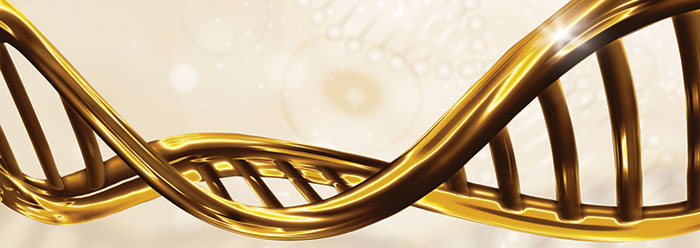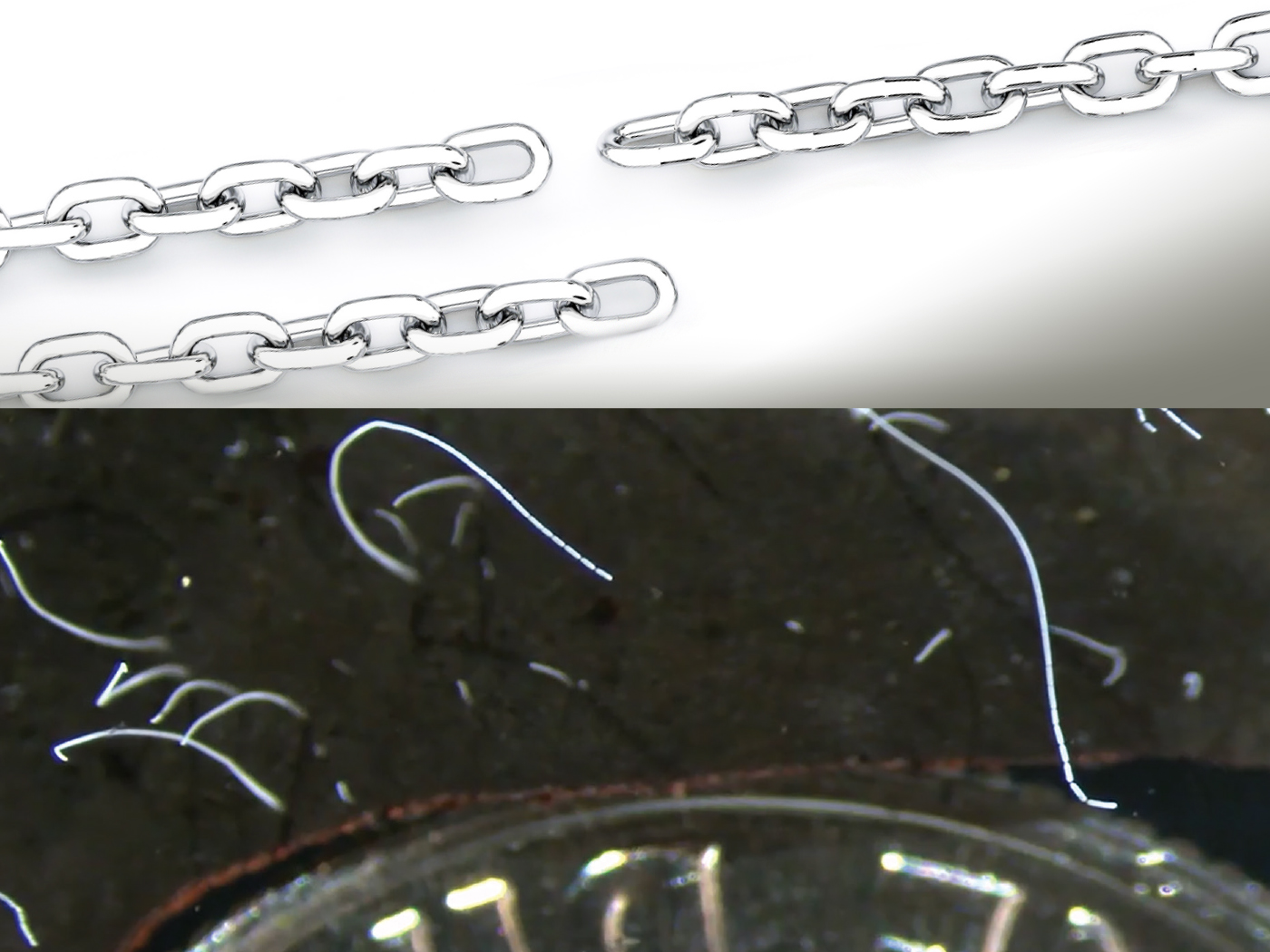by Frank Sherwin, M.A., and Jeffrey P. Tomkins, Ph.D.*
Decades ago, high school and college students learned the basics of how the molecule of life—DNA—contained segments called genes that code for proteins. Today, that rather simple concept is entirely inadequate to explain what really happens at the genetic level and how DNA functions.1 Recent discoveries have caused a major paradigm shift in our knowledge of the nature of DNA, and none of the findings provide evidence for evolution at any level.
Consider the following statement by famed evolutionist Eugene Koonin and his colleague:
We cannot escape considerable skepticism. It seems that the two-pronged fundamental question: “why is the genetic code the way it is and how did it come to be?”, that was asked over 50 years ago, at the dawn of molecular biology, might remain pertinent even in another 50 years. Our consolation is that we cannot think of a more fundamental problem in biology.2
Think of the complexity of the DNA molecule as an onion. Peeling away one layer of startling function and ingenuity only reveals another, and another, and so on. Biochemical surprises from research discoveries now follow each other on an almost weekly basis. While secular researchers are lightheaded with all this new and fascinating genetic information, they should also be worried. The foundation of their worldview, Darwinism, is incapable of explaining any of this astonishing complexity by mere time and chance.
Scientists have been astounded that a human body is the result of “just” approximately 25,000 protein-coding genes. But no longer are these key DNA units viewed as simple features. Instead, genes are found in pieces that are both coding and non-coding. The different coding segments called exons can be stitched together in a variety of ways after they are copied into a messenger molecule called RNA in an intricately controlled process called alternative splicing. This allows for many different protein products to come from a single gene. One gene can produce a wide variety of proteins for different tissues and cell types according to demand. Because of this incredible versatility, some scientists have referred to genes as the Swiss army knives of the genome.
The multilevel and combinatorial information regulating the splicing of gene products is called the splicing code.3 It has been designated as yet another code in the genome and reveals how cells use a limited number of protein-coding genes to produce an almost endless array of final products that perform everything from bodily physiology to making extremely complex organs such as the brain. This unimaginably intricate code could only be cracked by a large team of computer scientists and molecular biologists. The discovery sheds more light on the diversity of interlocking mechanisms associated with genetic regulation—long a mystery for biologists.
Besides protein-coding genes, there are many different types of code in the human genome that we are only just beginning to understand. Shortly after the first drafts of the human genome were released in 2001, the ENCODE (ENCyclopedia of DNA Elements) project was launched by the U.S. National Human Genome Research Institute. This ongoing effort is designed to identify all functional elements in the human genome. Research in this field shows that at least 80% of human DNA is biochemically active and involved in a wide variety of cellular processes and genome function.4,5 The vast stretches of the genome that evolutionists once proclaimed as non-functional—and fodder that evolution could use to produce new traits through the mystical processes of mutation and selection—can hardly be called “junk DNA” anymore.
One of the ENCODE project’s major discoveries was that non-coding DNA plays a huge diversity of important roles and functions. An early indicator of this was that nearly the entire genome is copied into RNA—not just protein-coding genes.6 The ENCODE researchers labeled this phenomenon pervasive transcription, and one research paper referred to the genome as an RNA machine.7 Much of this non-coding RNA is produced from specialized genes that make RNAs used in many different types of cell processes. The genes that produce these long non-coding RNAs outnumber protein-coding genes at least two to one.
Another field of research leading the genetic news is an area called epigenetics.5 It’s the science of genetic alterations outside of actual changes in DNA sequences, many of which are influenced by the environment and are heritable. One of the most heavily studied types of epigenetic change involves sections of the DNA molecule (cytosine bases) that are “modified” by the tagging of methyl groups that in turn can repress or activate genes.5
Another form of epigenetics involves tagging the histone proteins the DNA is wrapped around, which affects chromosome structure.5 Each histone has a tail that can be modified by cellular machinery that adds different types of molecules. This in turn affects how tightly the DNA molecule wraps around the complex of histone proteins and determines if a gene is accessible for being turned on via transcription factors—regulating proteins that bind to the DNA. When further research was conducted on the emerging histone code, it was discovered to be much more intricate than the methylation of DNA bases. Amazingly, there are over 100 different types of histone tags that act in combination to create an incredible syntax that not only regulates gene expression but also affects a wide diversity of processes in the genome. Scientists have labeled this the histone code.5
The previously mentioned non-coding DNA is also involved in epigenetics. In one study, scientists discovered that non-coding RNA forms a matrix surrounding chromosomes to promote genome stability and function.8 This particular class of genome-wide RNA was previously thought to be useless junk. Now, it’s known to be vital to the function of the entire genome. Other non-coding RNAs bind to DNA to either help activate or silence it. This epigenetic complexity works together in a symphony of intricate multilevel control that is seemingly infinite in its ingenuity.
Another feature of DNA is its ability to maintain its integrity. Our chromosomes must be constantly surveilled and repaired due to breaks and mutations that assail us daily from environmental stresses. We are designed with trillions of cells, and it’s estimated that thousands of mutations occur in each cell every day.9 In every cell there are constant, numerous breaks and alterations of the bases that form the code of the DNA molecule. Clearly, there must be a way of not only monitoring but quickly repairing this incessant damage. This is accomplished by DNA damage response machinery that is the focus of a field of research that continually reveals new surprises. These systems first detect DNA code errors or breaks in the strand and then repair them to their original sequence and structure.9 Computer systems must be monitored by software and human workers in a process called fault tolerance designed to maintain data integrity and restoration, but the cell does this all on its own using incredible engineering.
DNA is highly organized and dynamically controlled in both space and time. It’s important to realize that in the nucleus of a cell, chromosomes function in three dimensions. Individual chromosomes occupy specific regions and precise three-dimensional conformations according to cell type.10 For example, the three-dimensional chromosome architecture of a liver-cell nucleus is different from that found in a brain cell. In addition, genes that are turned on in the same type of cell process are typically positioned in groups in specific locations inside the nucleus even if they are located in different chromosomes—a feature called transcription factories.10,11 Transcription factories regulate, produce, and process the functional RNA gene copies. Amazingly, transcription factories seem to remain stationary in the nucleus while the DNA is moved into place and reeled through them like film in a projector.
Not only are thousands of genes specifically coordinated and intricately regulated together in three-dimensional space in a precise manner according to cell type and all their connected physiological processes, but they also function within a fourth dimension—the dimension of time.12,13 As in any man-made engineered system, everything in the genome must occur within the context of precise scheduling or chaos and cell death would result.
The seemingly infinite complexity of the DNA goldmine is astounding. The avalanche of information from DNA research is destroying the evolutionary paradigm. The idea that the genome and its multilayered codes, surveillance and repair systems, and four-dimensional executional complexity all somehow developed through random, purposeless processes is completely untenable.
We all know that complicated human- engineered systems never develop by chance, and what we have described in this article is far beyond humankind’s ability to even fully comprehend, much less build. The DNA goldmine clearly points to the omnipotent and all-wise Creator who made it all. As the Bible states, “The fool has said in his heart, ‘There is no God’” (Psalm 14:1).
References
- Tomkins, J. 2014. Gene Complexity Eludes a Simple Definition. Acts & Facts. 43 (6): 9.
- Koonin, E. V. and A. S. Novozhilov. 2009. Origin and evolution of the genetic code: the universal enigma. International Union of Biochemistry and Molecular Biology Life. 61 (2): 108.
- Barash, Y. et al. 2010. Deciphering the splicing code. Nature. 465 (7294): 53-59.
- The ENCODE Project Consortium. 2012. An integrated encyclopedia of DNA elements in the human genome. Nature. 489 (7414): 57-74.
- Tomkins, J. P. 2015. Extreme Information: Biocomplexity of Interlocking Genome Languages. Creation Research Society Quarterly. 51 (3): 187-201.
- Tomkins, J. P. 2017. Pervasive Genome Function Debunks Junk DNA. Acts & Facts. 46 (5): 14.
- Amaral, P. P. et al. 2008. The Eukaryotic Genome as an RNA Machine. Science. 319 (5871): 1787-1789.
- Tomkins, J. P. Former Junk DNA Candidate Proves Indispensable. Creation Science Update. Posted on ICR.org April 14, 2014, accessed May 12, 2017.
- Jeggo, P. A., L. H. Pearl, and A. M. Carr. 2016. DNA repair, genome stability and cancer: a historical perspective. Nature Reviews Cancer. 16 (1): 35-42.
- Davidson, S., N. Macpherson, and J. A. Mitchell. 2013. Nuclear organization of RNA polymerase II transcription. Biochemistry and Cell Biology. 91 (1): 22-30.
- Li, H.-B. et al. 2013. Insulators Target Active Genes to Transcription Factories and Polycomb-Repressed Genes to Polycomb Bodies. PLOS Genetics. 9 (4): e1003436.
- Tomkins, J. P. Human Nucleome Reveals Amazing 4D World. Creation Science Update. Posted on ICR.org July 15, 2015, accessed May 12, 2017.
- Chen, H. et al. 2015. Functional organization of the human 4D Nucleome. Proceedings of the National Academy of Sciences. 112 (26): 8002-8007.
* Mr. Sherwin is Research Associate, Senior Lecturer, and Science Writer, and Dr. Tomkins is Director of Life Sciences at the Institute for Creation Research. Mr. Sherwin earned his M.A. in zoology from University of Northern Colorado, and Dr. Tomkins received his Ph.D. in genetics from Clemson University.












